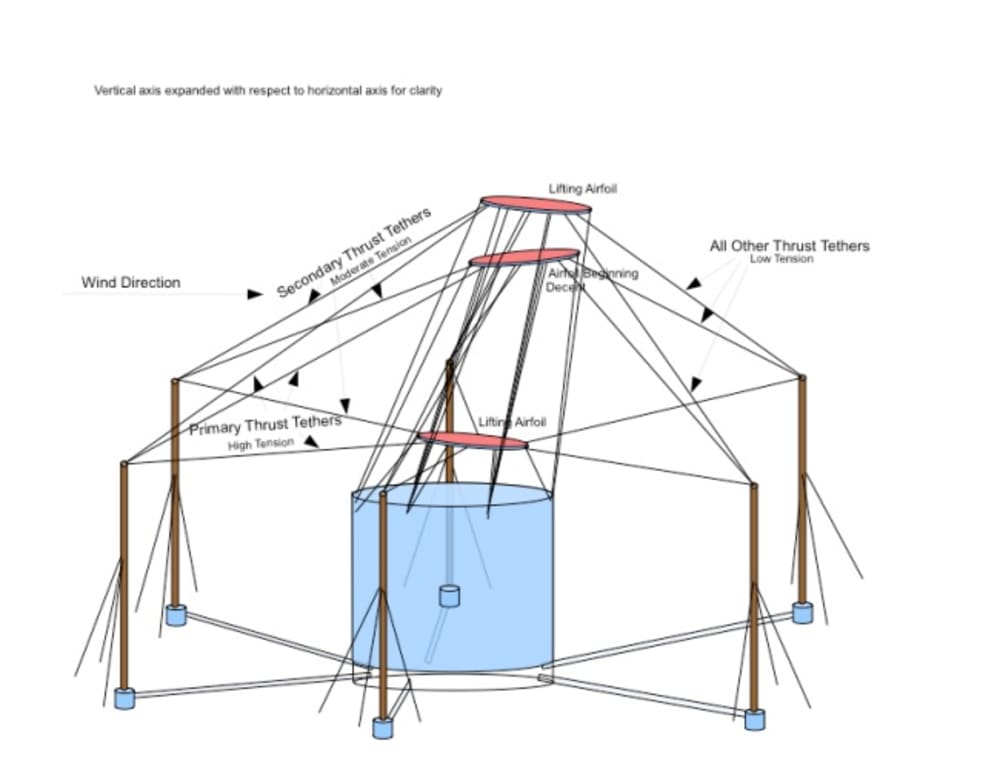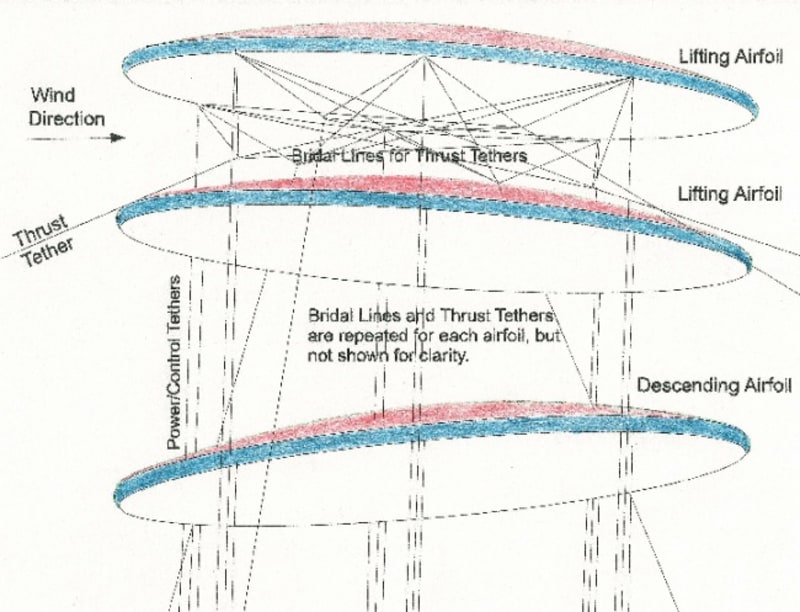Wind energy systems won't be popularly accepted until they are economically competitive with conventional electrical generation. Current wind generated power costs about three times that generated with coal or natural gas.
Drawbacks to current wind turbines include:
High cost.
Little power generated in low wind.
Birds killed by rotors.
Disturbing noise from rotors and gears.
When controls malfunction, rotors run too fast, and fly apart.
Heavy gearboxes, in rotating nacelles, on high towers, make maintenance dangerous and expensive.
This system should be competitive with other forms of power generation. Components are simple, duplicated several times in each system, and can be mass produced at reasonable cost.
Carefully balanced, high tech rotor blades are unnecessary. Instead, disk shaped, lighter than air, inflated airfoils, will be spaced in a vertical stack, with power/control tethers attached at six points around the rim of each airfoil, and wound on reels below the stack of airfoils.
Instead, of a tower, each array will have a base shelter, into which the airfoils can be withdrawn to avoid damage in high winds, and, housing the tether reels, control system, and alternators. Thrust tethers will run to pulleys anchored to six poles, away from the column of airfoils. These tethers will then be routed, through tubes, to smaller diameter reels. The airfoils will rise and fall sequentially in the air stream. Each rising airfoil will rotate the reels on which its tethers are wound, delivering power to the main drive, through freewheels.
Lighter than air airfoils will normally remain aloft, exposed to any air movement. Even in light winds, the thrust tether bridals, will pitch the airfoils into a climbing profile. Tension sensors on the thrust tether pulleys, will detect the wind strength and direction, whereupon, the power/control tethers can take over and command movement to maximize power from the available wind. When winds are light, more airfoils can be flown, to increase the energy harvested. As wind speed increases to the point where all available alternator capacity is used, lower (lighter duty) airfoils can be withdrawn into the base shelter.
Each reel will include a freewheel, and a planetary gear assembly, with brakes for the reel, and the planetary gear spider. The power shaft will always rotate the ring gear. The sun gear will drive the reel in reverse when the planetary spider is braked. During the rising phase, reels will drive the main shaft, through freewheels, harvesting energy.
Computer control of the brakes, and clutches, will allow the airfoils to be deployed, retrieved, regulated, and have power extracted, optimizing energy collection, at any wind speed, or direction.
Airfoils are tilted downward, by braking the windward power/control reels before the leeward reels. Braking the planetary spiders in all reels for an airfoil, will drive them in reverse, pulling the airfoil down to prepare for its next rising phase.
Power will be extracted by engaging selected alternators, with clutches from the main shaft.
Like this entry?
-
About the Entrant
- Name:Tom Thatcher
- Type of entry:individual
- Software used for this entry:Open Office
- Patent status:none





